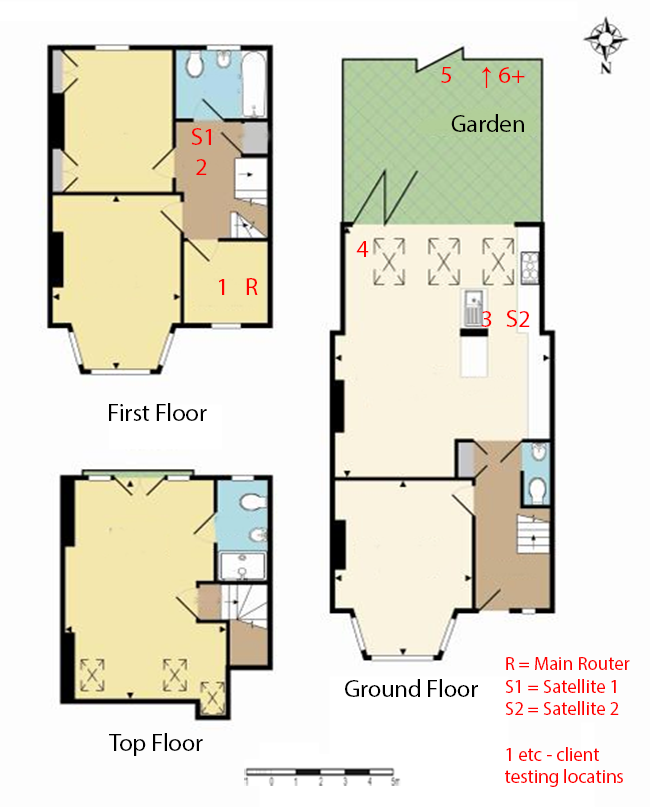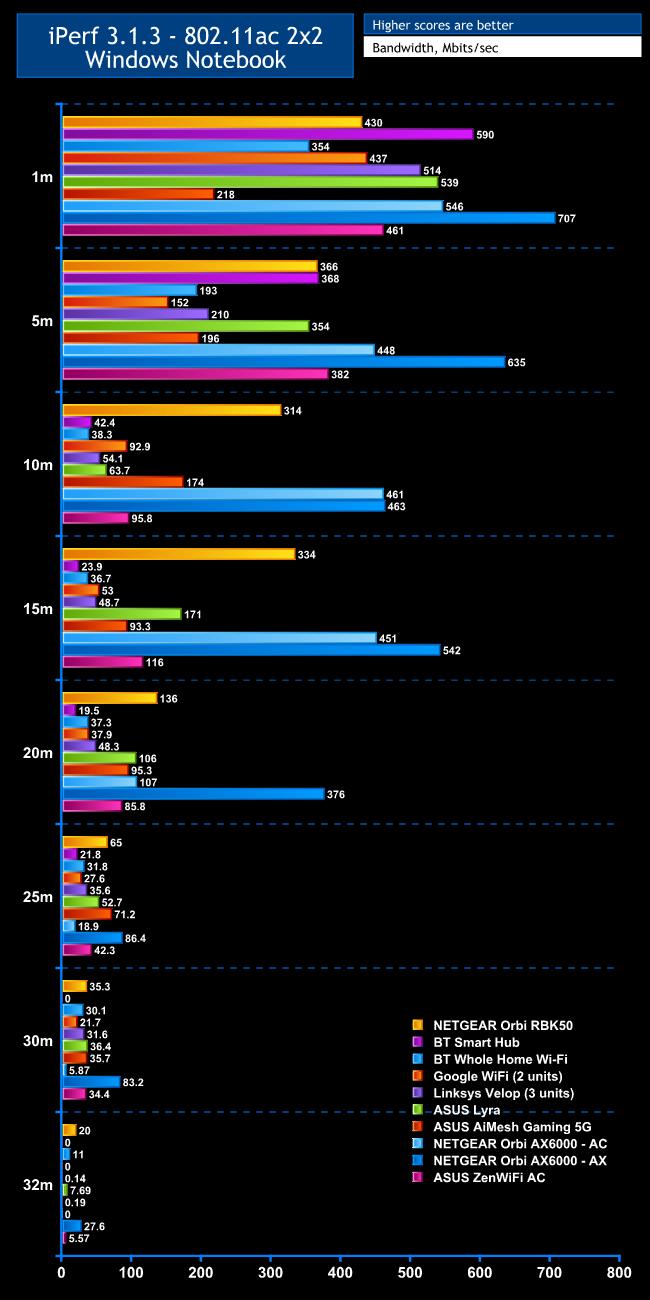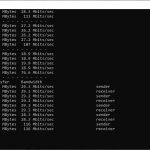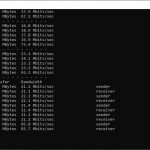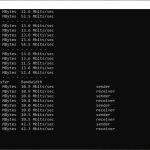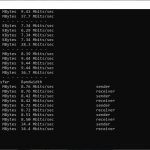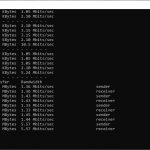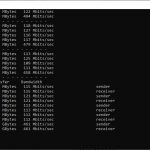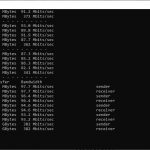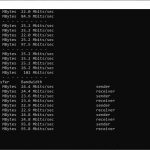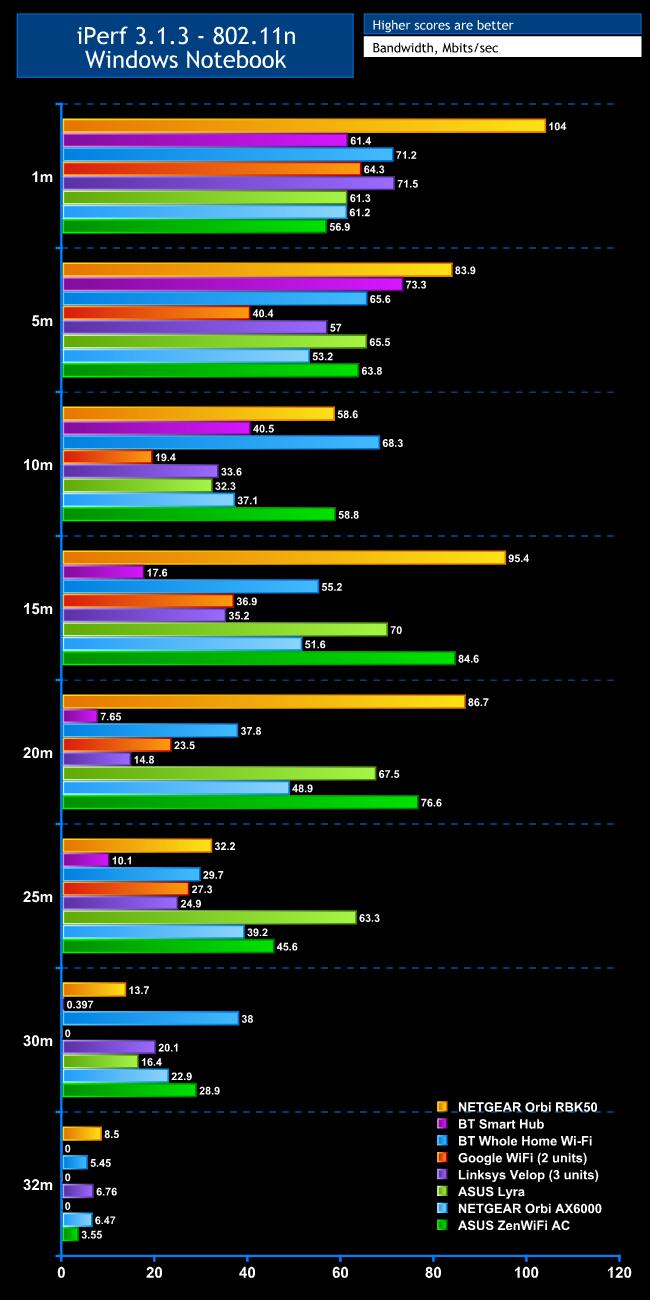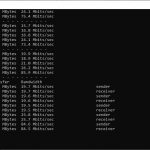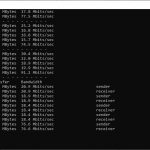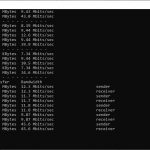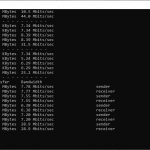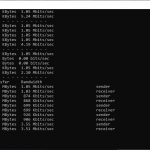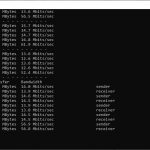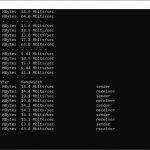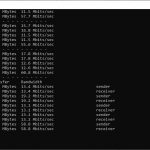We replicated the testing from our Ultimate Mesh WiFi Router Shootout as closely as possible with the ASUS ZenWiFi AC. However, we no longer had the Apple Macbook Pro in our possession, so had to leave this set of tests out.
We repeated the positions from the Ultimate Mesh WiFi Router Shootout, with eight different locations for our test notebooks. The clients used were an MSI WS63 7RK notebook with 2×2 802.11ac WiFi, and an older HP Folio 13, which maxes out at 3×3 802.11n WiFi.
In each case, we used the freely available iPerf 3.1.3 software, which stresses a network by sending packets of random data and measures the throughput. One system acts as a server, and the other as a client, as data is sent between them. In all cases, we used an Armari Windows 10 workstation connected to the primary ZenWiFi unit via Gigabit Ethernet as the server, so that the WiFi was always the slowest connection.
These are the iPerf commands we used:
For the server: iperf3 –s –i 1
For the client: iperf3 –c <IP Address> –P 4 –i 1 –t 60
Note that the client command sends four streams of data simultaneously, simulating a multi-client connection as closely as possible with just one client. It takes 60 throughput readings at one second intervals and then averages the result.
The above diagram shows the layout of the house we used for testing. Note that we didn't test on the top floor of the house because this was directly above the first floor and wouldn't have provided much of a range test. Instead, we used two locations on the same floor as the router (the first floor), then more distant locations on the ground floor extending out the back of the house into the garden.
Each test location, numbered in the diagram above, was approximately 5m away from the last one.
With the mesh networking and standalone router products used for comparison, location 1 was very near to the router, around 1m away. The next location – 2 – was around 5m away, with a wall in the way, but on the same floor. Location 3 was on the floor below, so had walls and a floor in between, but was a further 5m away. Location 4 was the last one actually inside the house. Locations 5 to 7 were then 5m further down the garden. Location 8 was only 2m further down, as this was the end of the garden, but also behind a shed, so posed a significant challenge that only a few mesh WiFi systems can cope with.
We should also say a few words about the location of the satellites. The routers or primary unit were always placed in the same location, in the first floor study next to the broadband. In the case of three-unit mesh systems such as BT Whole Home Wi-Fi and the top Velop option, the second and third satellites were placed at S1 and S2.
With the two-unit Google WiFi, the second unit was placed at S1, due to the recommendation of the setup software. However, in the case of the Orbi RBK50, it was possible to place the second unit at S2, due to the signal strength from these systems.
For the ZenWiFi system, we placed the primary unit in location R, with the first satellite at S2, as this was the configuration for the Orbi RBK50 and the ZenWiFi has a very similar WiFi specification.
802.11ac 5GHz
Within 1m, the ZenWiFi offers good throughput of 461Mbits/sec, which beats the NETGEAR Orbi RBK50 but there are plenty of alternatives that are better.
At 5m, the throughput of 382Mbits/sec is much more competitive, with only the WiFi 6-powered NETGEAR Orbi AX6000 going ahead. However, this drops considerably to 95.8Mbits/sec at 10m, which is significantly behind the Orbi RBK50 and AX6000. We suspect that the notebook was still talking to the router rather than the satellite, despite being sat right next to the latter at this location. At 15m, the throughput has improved again to 116Mbits/sec, which would imply our guess was right. This was a solid performance, but interestingly the ASUS Lyra was faster at this range thanks to its three units.
The 20m result of 85.8Mbits/sec puts the ZenWiFi in amongst the mesh crowd, but the NETGEAR Orbis were ahead and again so was the ASUS Lyra, and also ASUS's AiMesh Gaming 5G. Moving out to 25m, the throughput of 42.3Mbits/sec is usable but the AiMesh Gaming 5G system is better. This continues to 30m, although achieving 34.4Mbits/sec is commendable at this range. There was still a vaguely usable throughput of 5.57Mbits/sec at the 32m “behind the shed” distance, which many mesh systems and all standalone routers fail to achieve.
Overall, the ZenWiFi is capable of wide coverage, but not performance that's quite up with the best mesh WiFi systems beyond 5m.
802.11n 2.4GHz
The results are a bit more persuasive with 2.4GHz 802.11n. The ZenWiFi posts a mediocre 56.9Mbits/sec at 1m, and at 5m the throughput of 63.8Mbits/sec is merely up with the pack.
However, at 10m, the ZenWiFi maintains a more competitive 58.8Mbit/sec, with only the NETGEAR Orbi RBK50 and BT Whole Home WiFi ahead. The ZenWiFi is the second fastest to the Orbi RBK50 at 15m, achieving 85.6Mbits/sec, and is in the same position at 20m, with 76.6Mbits/sec.
At 25m, the ZenWiFi is still second fastest with 45.6Mbits/sec, but this time to ASUS's own Lyra. It's second again at 30m, but now to the BT Whole Home WiFi. Only with our 32m “behind the shed” test does it drop to a barely usable 3.55Mbits/sec.
Overall, a good showing. Although it's not the fastest up close, it maintains speed to a good distance.
Be sure to check out our sponsors store EKWB here
 KitGuru KitGuru.net – Tech News | Hardware News | Hardware Reviews | IOS | Mobile | Gaming | Graphics Cards
KitGuru KitGuru.net – Tech News | Hardware News | Hardware Reviews | IOS | Mobile | Gaming | Graphics Cards


